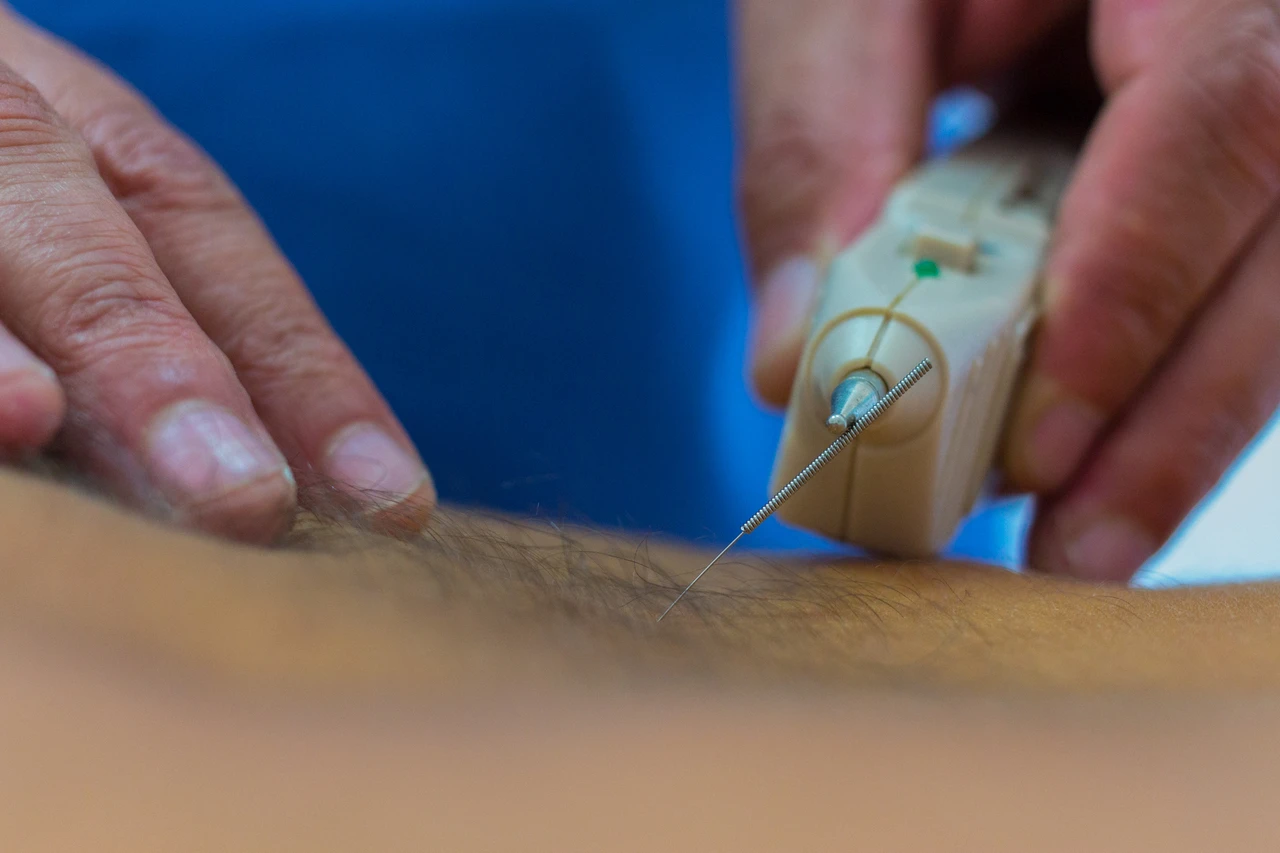
All the information provided in this section originates from the official webpage of Gunn’s Intramuscular Stimulation training & research provider. All clinical training and research in Gunn’s intramuscular stimulation are currently endowed by the Division of Sports Medicine (Faculty of Medicine), at the University of British Columbia.
It is an honor for our clinic to have a certified Gunn IMS therapist from Dr Chan Gunn himself when he was teaching courses for the Institute for the Study & Treatment of Pain (i-STOP).
Intramuscular Stimulation (Gunn IMS) is a needling technique used to treat chronic pain which is found to be of neuropathic origin, and which has not responded to conventional physiotherapy techniques. Surgery operation has also been proven to be a non-effective long-term management option and in many cases is not even an option.
Painkillers and other analgesic pills only mask the pain (often poorly) and promote body toxicity, compounding further the problem. The neuropathic pain only responds to a physical input of energy to change symptoms behavior.
Intramuscular Stimulation (IMS) is also a total system for the diagnosis and treatment of myofascial pain syndrome (chronic pain conditions that occur in the musculoskeletal system when there is no obvious sign of injury or inflammation). It was developed by Dr Chan Gunn while he was a physician at the Worker’s Compensation Board of British Columbia in the ’70s, where he investigated the large number of mysteriously stubborn cases after frustration with the ineffective modalities at his disposal. Dr Gunn is currently a clinical professor and teaches IMS at Universities in British Columbia, Seattle, and around the world.
IMS is grounded in Western Medical Science. Although it uses implements adapted from traditional acupuncture, it is based on scientific, neurophysiological principles in its radiculopathic model of pain.
The treatment utilizes acupuncture needles since they are the thinnest implements available that are designed to penetrate deep within muscle tissue, specifically targets in injured muscles that have contracted and become shortened from distress.
The treatment involves dry needling of affected areas of the body without injecting any substance. The needle sites can be at the epicenter of taut, tender muscle bands, or they can be near the spine where the nerve root may have become irritated and supersensitive.
Penetration of a normal muscle is painless; however, a shortened, supersensitive muscle will ‘grasp’ the needle in what can be described as a cramping sensation.
“Neuropathic pain” or what happens when nerves start to go wrong…
This type of pain, known as neuropathic pain, typically occurs when nerves malfunction following minor irritation. Nerves and nerve endings become extremely sensitive and cause innocent, harmless signals to be exaggerated and misperceived as painful ones (This characteristic is known medically as allodynia). The result is the pain, even when extensive medical tests show there is “nothing wrong”.
Doctors usually have no difficulty in treating pain caused by injury or inflammation, but they are often perplexed by pain that shows no sign of tissue damage or inflammation. Pain without any specific cause can be present in conditions like headaches, whiplash injuries, low back pain, tennis elbow, frozen shoulder or others as well.
IMS relies heavily on a thorough physical examination of the patient by a competent practitioner, trained to recognise the physical signs of neuropathic pain. This physical examination is indispensable since chronic pain is often due to a neurological cause, and as opposed to symptoms arising from a structural cause can, therefore, be invisible to expensive X-rays, MRI Tests, Bone and CT Scans. Failure to recognise these signs will result in a false diagnosis, and thus, a poor starting point for physiotherapy.
Treatments are being held usually once a week to allow time between treatments for the body to heal itself. The number of treatments you require will depend on several factors such as the duration and extent of your condition, and how quickly your body can heal. The rate of healing differs from person to person and up to a certain degree, depending on the condition of your neural tissue (young people usually heal more quickly). If the pain is of recent origin, one treatment may be all that is necessary.
















